The Animals of Åsens By
The animals here are all Swedish heritage breeds and play an important role in maintaining biodiversity. They come to the village in the spring when the weather and pastures are suitable, and stay until the fall, when they are brought in by our animal caretaker. The pastures are large and hilly, and we move the animals between grazing areas as the grass is eaten.
These old heritage breeds have adapted over many years to the environment they live in and developed unique traits that are important to preserve. However, since these breeds are smaller and not as high-producing as the animals in modern farming, they have gradually been replaced by other breeds and their numbers have decreased. Today, several of these breeds are endangered.
If the heritage breeds disappear, we lose not only part of our living cultural heritage but also an important genetic resource. It is impossible to know which animals will be needed in the future, but these heritage breeds have adapted to the Swedish countryside over a long period, and perhaps it is precisely those traits that the future agricultural animals will need again. By collaborating with heritage breed associations and being connected to gene banks, we help preserve these breeds for the future.
Our Animals
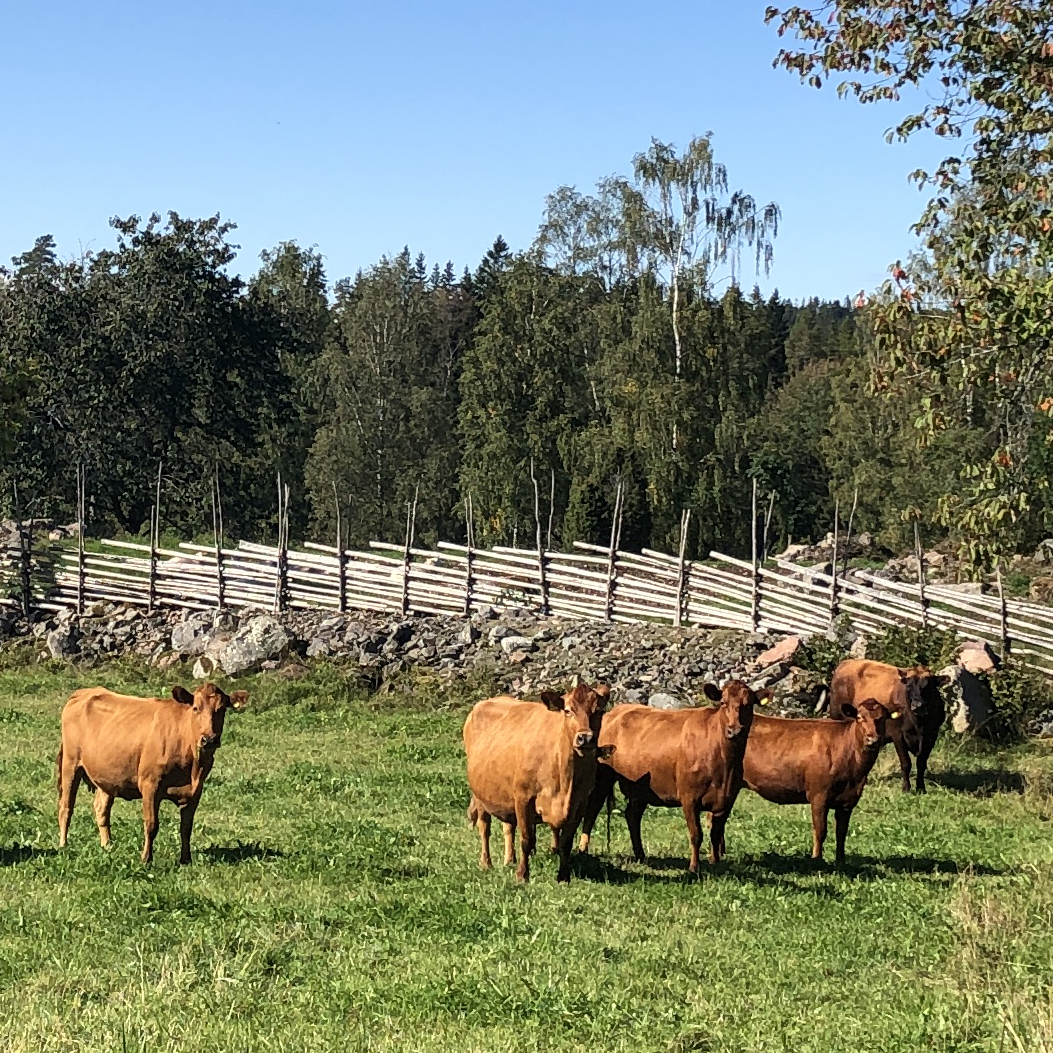
Rödkulla Cows
The Rödkulla cow is one of Sweden’s oldest cattle breeds. In the 1970s, only 18 cows were left, and the breed was on the brink of extinction. Now, there are over 1,500 animals in Sweden. The breed is polled, meaning the calves are born without horns, and can be used for both beef and milk production.
A Rödkulla comes in various shades of red (reddish-brown), has a good temperament, and an active personality. The cows are pregnant for 9.5 months, have strong mothering instincts, and give birth to one calf at a time. A cow weighs between 350-600 kg and lives for 15-20 years.

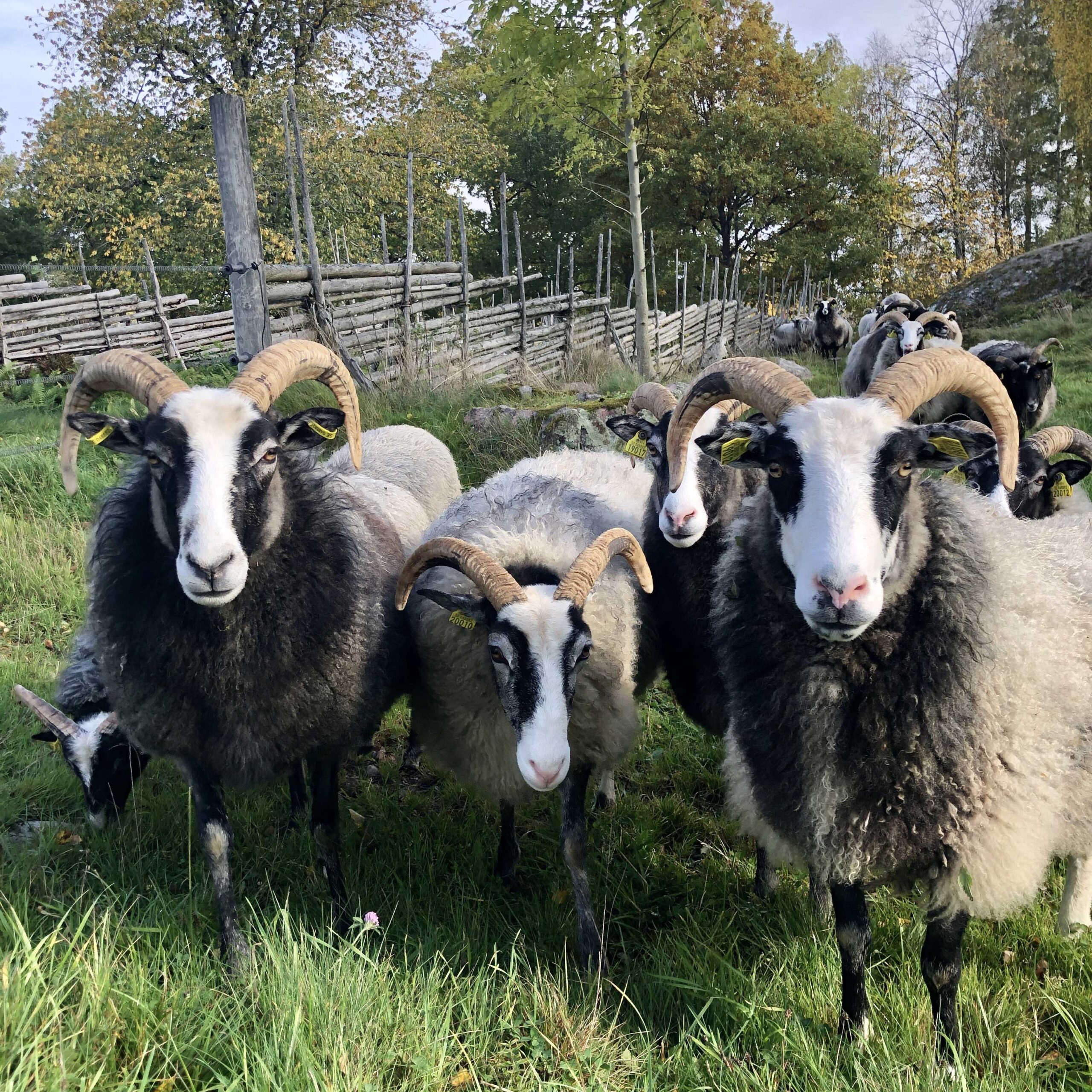
Gutefår (Gute Sheep)
Gutefår, also known as “outdoor sheep,” have existed on Gotland for as long as humans have lived there. Both the ewes and rams have horns, and their color is typically gray or brown. They are capable of shedding their fleece naturally, but to assist with the shedding, shearing is recommended (which we do here at Åsens).
The ewe weighs 45-60 kg, and the ram weighs 70-100 kg. They live for 12-15 years, but can reach up to 20 years. The ewe is pregnant for 5 months and gives birth to 1-2 lambs. Both wool, skin, and meat from the Gutefår are used.

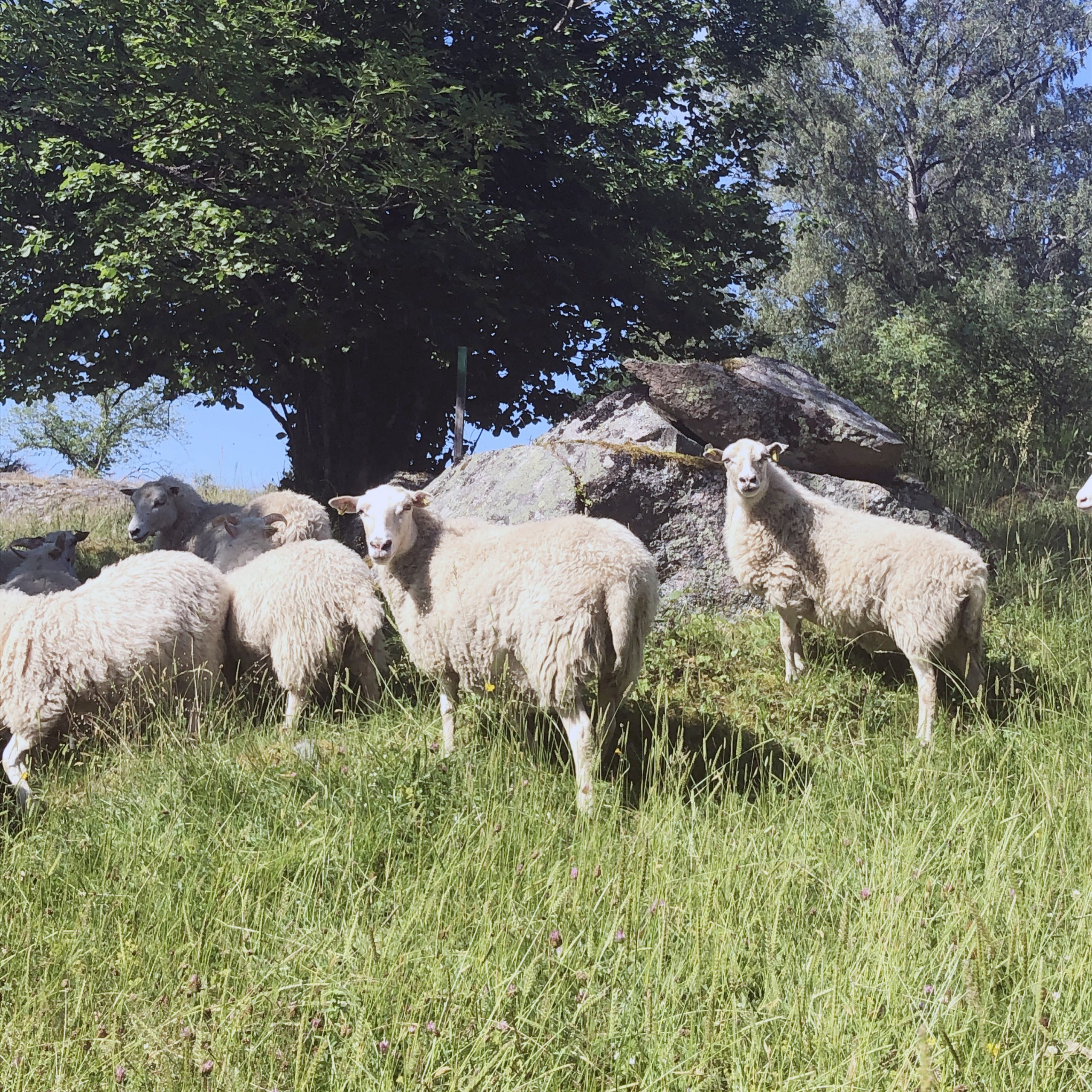
Dala Pälsfår (Dala Fur Sheep)
Dala Pälsfår got their name from the primary use of their wool. Some young lambs develop beautiful corkscrew curls, which historically have been used as decoration on clothing. The breed originally comes from the parish of Älvdalen.
The most common color is white, but dark spots often appear on the body, head, and legs. Occasionally, black lambs are born, but they typically turn gray as adults. The ewe weighs 30-35 kg, and the ram weighs about 50 kg, with a shoulder height of around 61 cm. Only the rams have horns. The ewe is pregnant for 5 months and gives birth to 1-2 lambs.

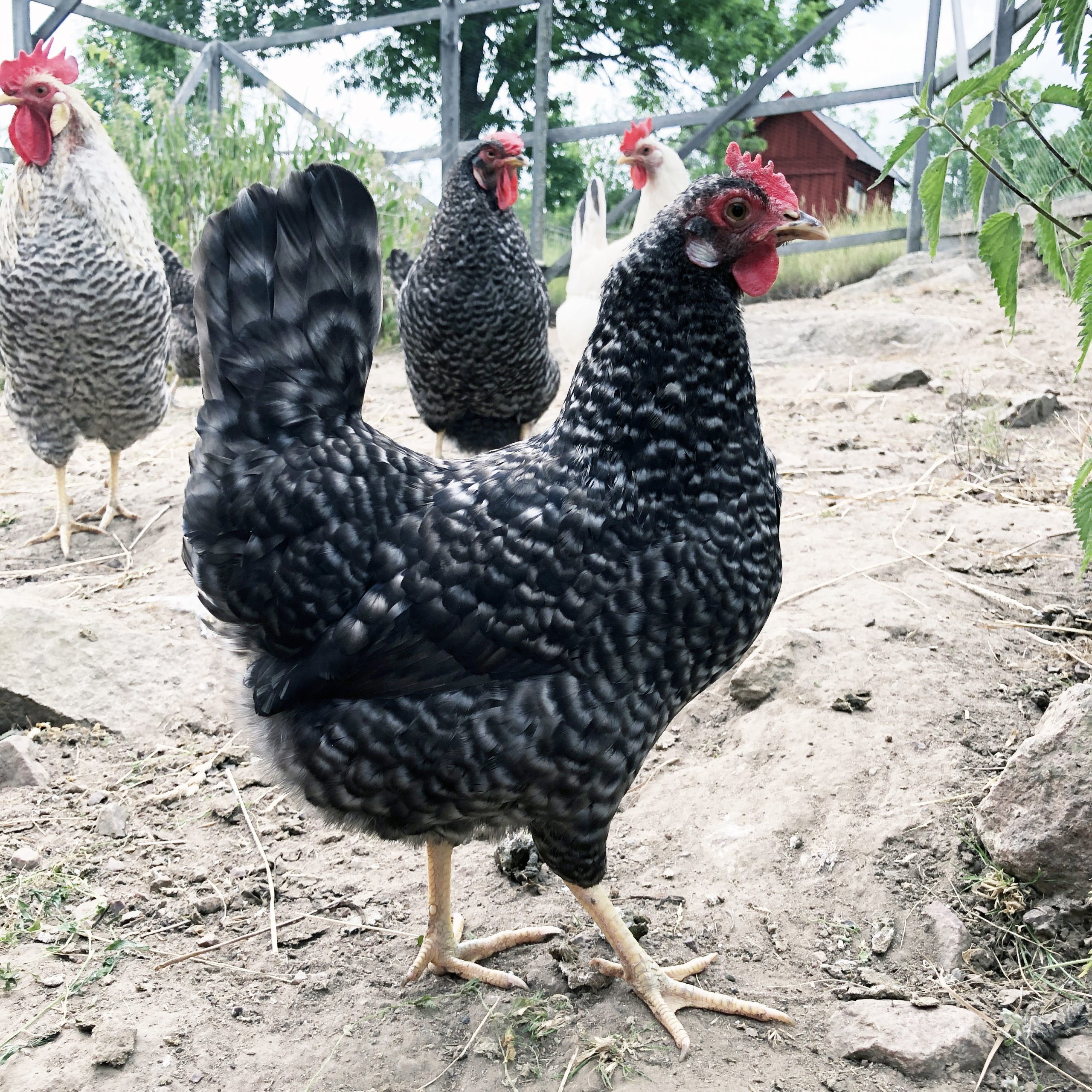
Öland Chicken
In 1992, there were only five Öland chickens and one rooster left in all of Sweden, but thanks to intensive efforts, there are now over 600 Öland chickens. The breed is robust and medium-sized, with a good ability to avoid predators and is easy to make social.
The hens are good mothers, although not as skilled at incubating. However, once they begin to brood, they will do so for 3 weeks and can have up to 20 chicks. The eggs are off-white/brownish and weigh 55-60 g. The colors vary between white, black, and gray-striped. The hen weighs around 2 kg, and the rooster weighs 2.5-3 kg, with a lifespan of up to 10 years.

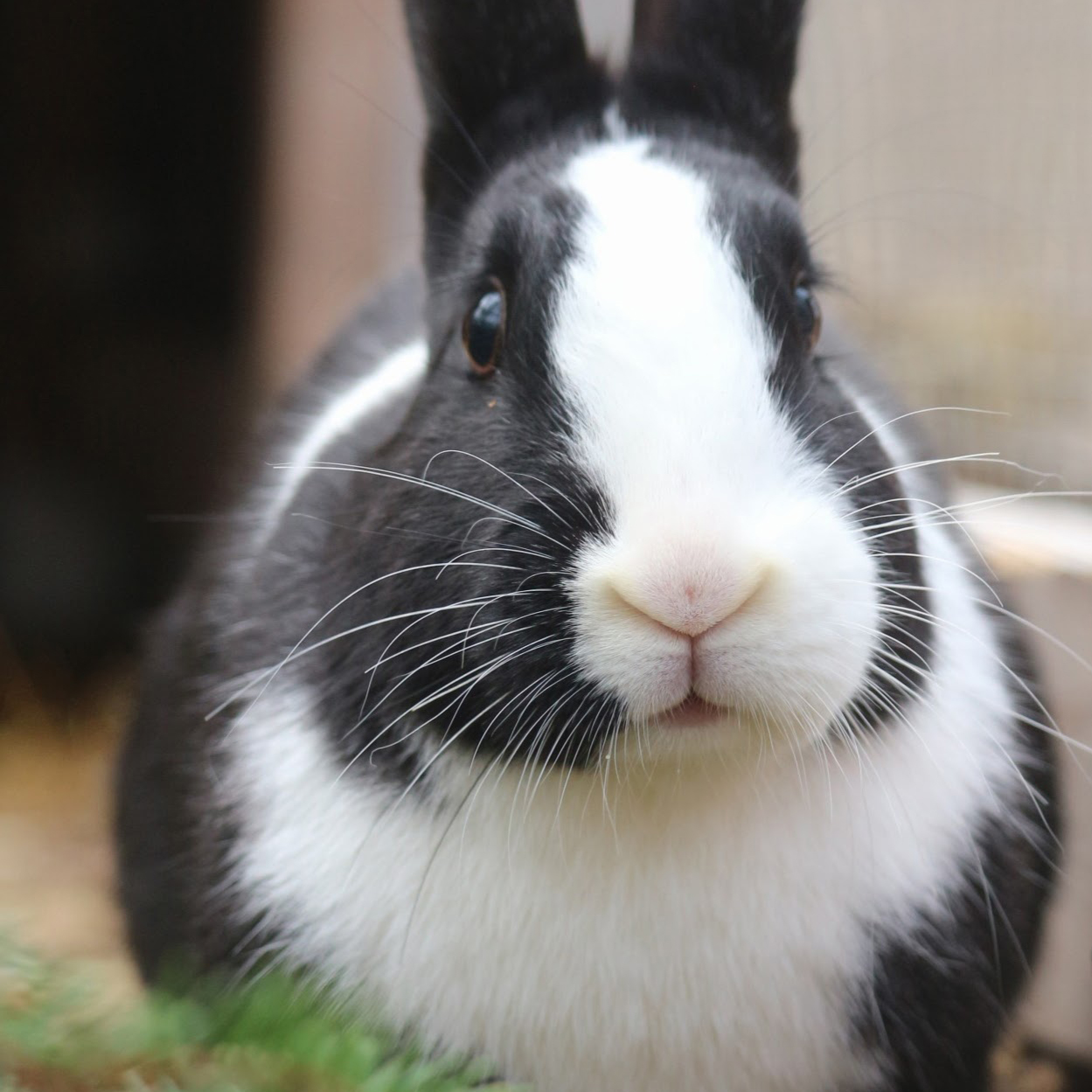
Mellerud Rabbit
The Mellerud rabbit is a remnant of the old Swedish landrace rabbit. It was found in a herd belonging to Edith Johansson, who lived near Mellerud in Dalsland. The rabbits were therefore named Mellerud rabbits.
The rabbits closely resemble the Gotland rabbit in body structure but are only found in black and white (Dutch markings) or entirely white (albino). Adult rabbits weigh around 3 kg, have short fur, and upright ears. Normally, Mellerud rabbits have 4-6 offspring.

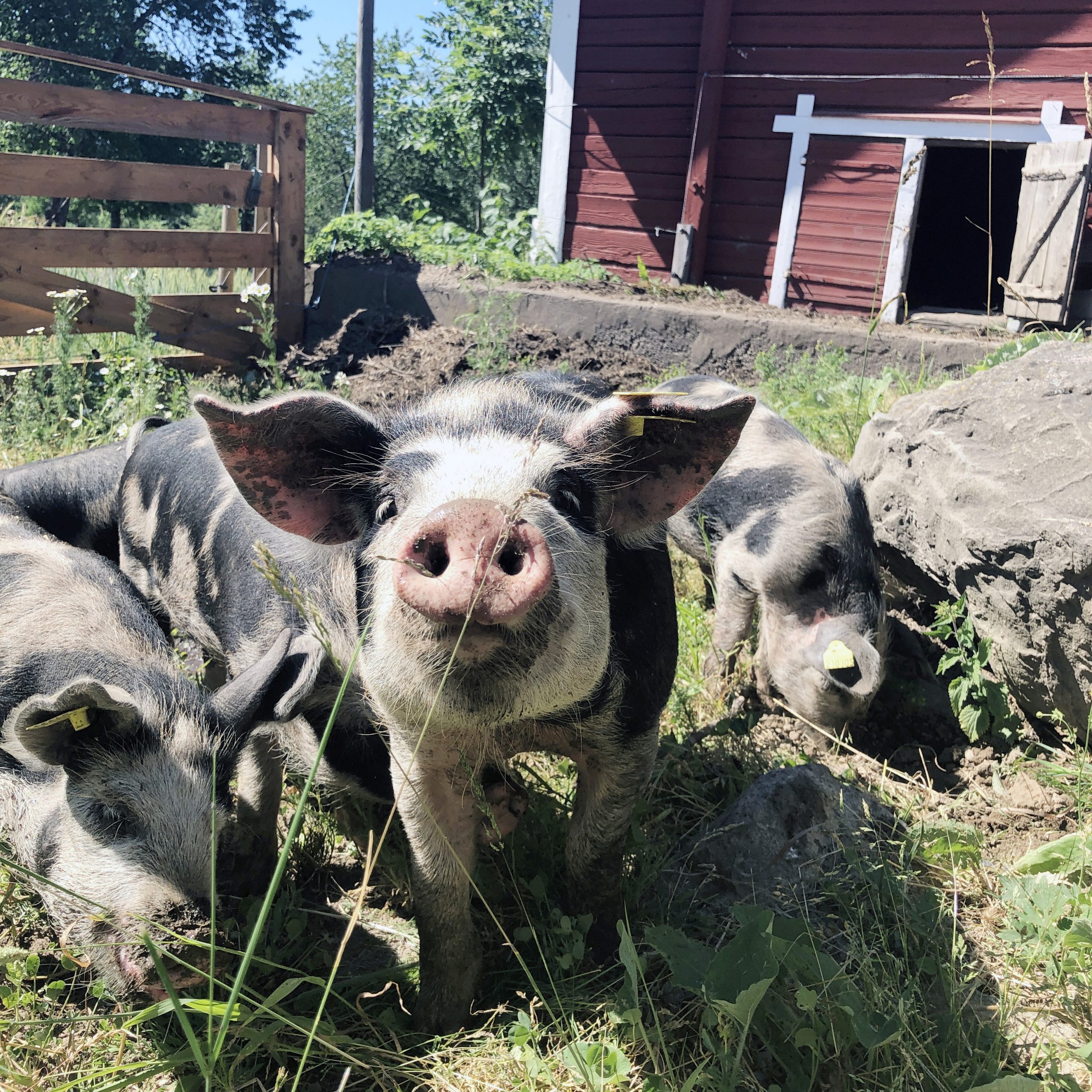
Linderöd Pig
The pigs that root around here in the village are borrowed from Tomas and Annie at Fagerhults Gård.
Linderöd pigs are the only remaining old Swedish pig breed. Their color is black and spotted, with a base color of red, gray, white, or brown. The pigs have upright ears. The boar weighs around 250 kg, and the sow weighs about 150 kg. They live between 8-10 years, but can reach up to 20 years. The sow is pregnant for three months, three weeks, and three days, and can have up to 14 piglets per litter.

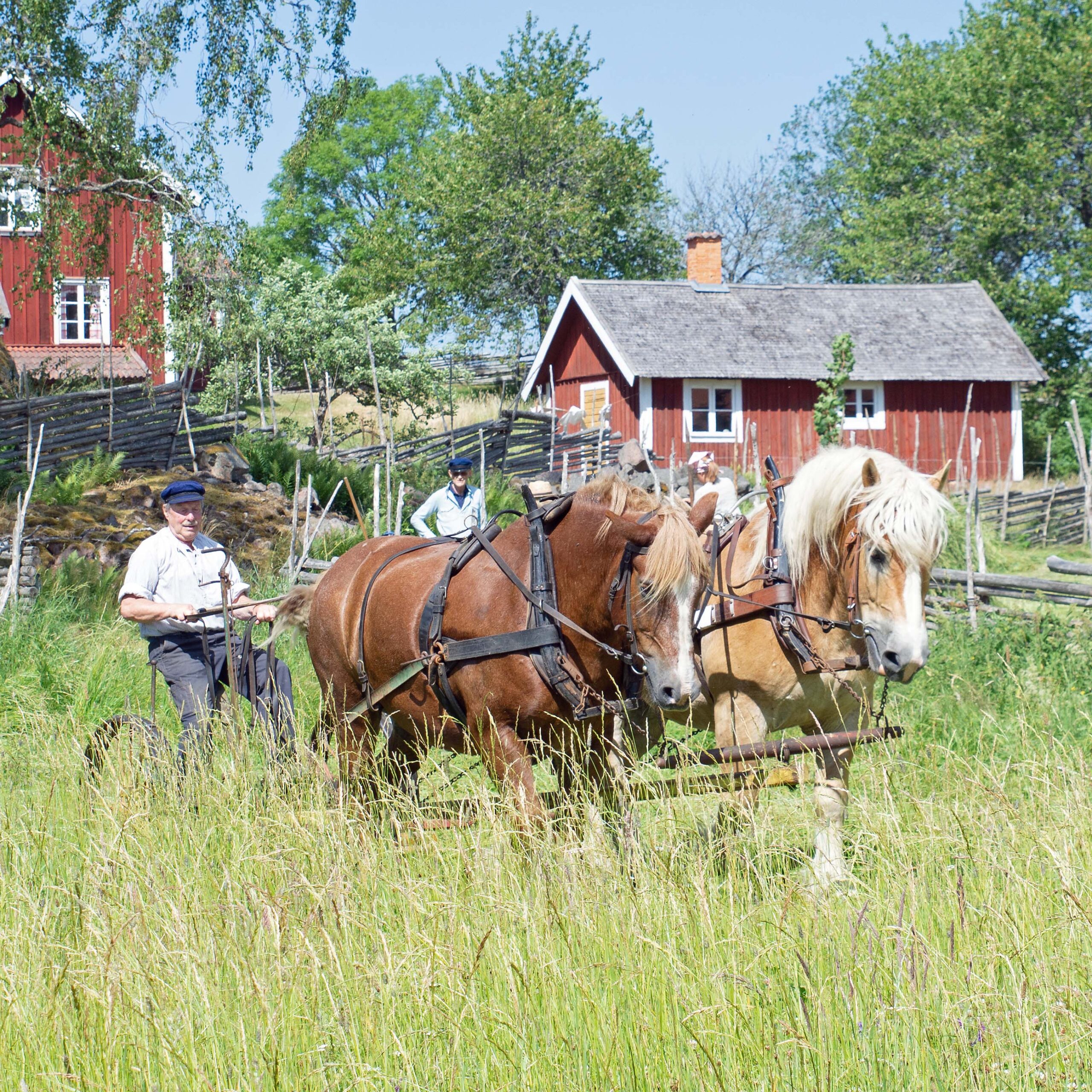
Ardennes Horse
The Ardennes horses are used in agriculture and for carriage rides during their free time, and are owned by the coachman Andreas. The Ardennes is a heavily built horse with a large head, short and muscular neck, short and powerful legs, and a broad chest. They stand at a height of 150-160 cm at the withers and weigh between 500-800 kg (though some can weigh over a ton!).
The breed has good work qualities, a sound exterior, and a gentle temperament, living up to around 20 years. The mare is pregnant for 335-340 days and gives birth to one foal at a time. The most common coat colors are roan chestnut, dark chestnut, gray, and light brown, but light chestnut and isabel also occur.

Take Care of the Animals!
Our hiking trails wind beautifully through the pastures. Feel free to take a walk and show respect for the animals, keep your distance, and do not interact with the grazing animals unless a caretaker is present. If you have a dog, it is welcome to join, as long as it is on a leash. Remember to wash your hands both before and after touching the animals – for both their health and yours!

